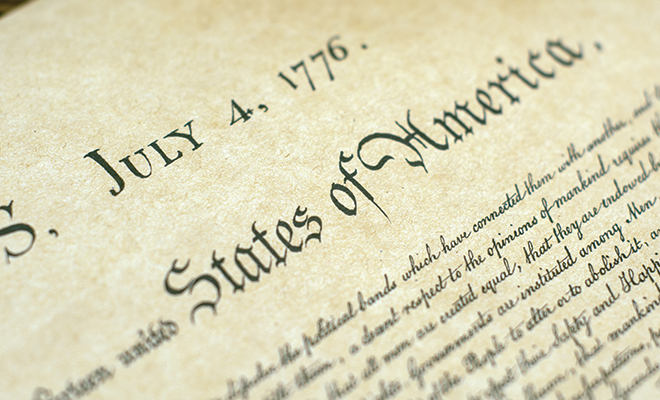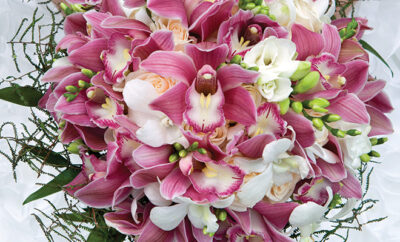
A Remarkable History: 245 Years of July 4th
On July 3, 1717, John Adams, who would later become America’s second president, wrote a letter to his wife, Abigail. It was the day after the Continental Congress voted to sever ties with the British crown and become an independent nation. Adams thought that the 2nd of July would be the day that would live in history.
T he letter said, in part, “The Second Day of July 1776, will be the most memorable Epocha, in the History of America. I am apt to believe that it will be celebrated, by succeeding Generations, as the great anniversary Festival. It ought to be solemnized with Pomp and Parade, with Shews, Games, Sports, Guns, Bells, Bonfires and Illuminations from one End of this Continent to the other from this Time forward forever more.”
He was wrong, but only by two days. It took two more days for a congressional committee to approve the changes.
On July 4th, the final version of the Declaration of Independence, written by Thomas Jefferson, was sent to a printer who published a broadside; four days later, Colonel John Nixon of Philadelphia read a printed Declaration of Independence to the public for the first time. A year later, Philadelphia celebrated a 4th of July party with the ringing of church bells, military bands, a 13-gun salute and 13 firework rockets to honor the 13 colonies. In 1801, President Jefferson, who had just moved into the White House, commemorated the day with horse races, parades, food and drink. The tradition continued for the next century.
There’s an odd coincidence regarding July 4th and American presidents. Fifty years after the Declaration of Independence was officially accepted, on July 4, 1826, both Adams and Jefferson passed away. Adams’ last words were “Thomas Jefferson still survives.” He was wrong. Jefferson had died five hours earlier.
The coincidence was not lost on the American public. The New York Evening Post, a newspaper founded by Alexander Hamilton, said, “Three of the four presidents who have left the scene of their usefulness and glory expired on the anniversary of the national birthday, a day which of all others, had it been permitted them to choose [they] would probably had selected for the termination of
their careers.”
James Monroe, the fifth American president, died on July 4th five years later. Then, in 1850, President Zachary Taylor became sick while attending a July 4th celebration at the Washington Monument, dying five days later, possibly from cholera.
Traditions that celebrated the 4th of July spread after the War of 1812. The United States had defeated Great Britain, but not before the British stormed Washington, D.C., and burned the White House, later painted white to cover the burn marks. The Star-Spangled Banner was written to commemorate the American victory at Fort McHenry in Baltimore Harbor. But it wasn’t until 1870 that July 4th became a federal holiday.
Today, observances continue in all of the 50 states, including some celebrations that the Founding Fathers and Mothers could have never imagined. Now, there is much, much more to see and do. In the former British colonies such as Philadelphia, hundreds of thousands attend block parties, hoagie-eating festivals and concerts by popular musicians. New York City stages the country’s largest pyrotechnics display, with 40,000 firework explosions. In nearby Coney Island, the 105-year-old tradition of Nathan’s Hot Dog eating contest draws 40,000 fans and 2 million television viewers.
In Boston, the Boston Pops Orchestra plays to crowds gathered on the banks of the Charles River, with the 1812 Overture as the finale. In South Carolina, the July 4th parade takes place on the water, with a flotilla of decorated red, white and blue boats sailing on Lake Murray, near the capitol city of Columbia.
In Washington, D.C., the National Symphony holds a concert on the lawn of the U.S. Capitol to an audience of picnickers, who enjoy an after-dark fireworks display with the Lincoln Memorial and the Washington Monument in the background. The city of Chicago celebrates with fireworks at the Navy Pier and with an African/Caribbean International Festival of Life with two music stages featuring R&B, reggae and other music and vendors selling food, arts and crafts.
In Texas, the small Dallas suburb of Addison draws 500,000 people to see Kaboom Town, where 3,500 pounds of fireworks are set off during a half-hour show. Celebrations also include traditional American Indian powwows and festivals from the east to the west coasts, including the Open Indian Rodeo, the only rodeo sponsored by a tribe, the Navajo Nation.
And families everywhere gather to grill and barbeque, eat hot dogs and burgers and enjoy a long summer day together. Joining them are many brand-new citizens. More than 100 naturalization ceremonies are held between July 1 and July 5 across the country. Welcome to the U.S.A.! ■
Sources: bhg.com, tripsavvy.com, infoplease.com and newenglandhistoricalsociety.com.







